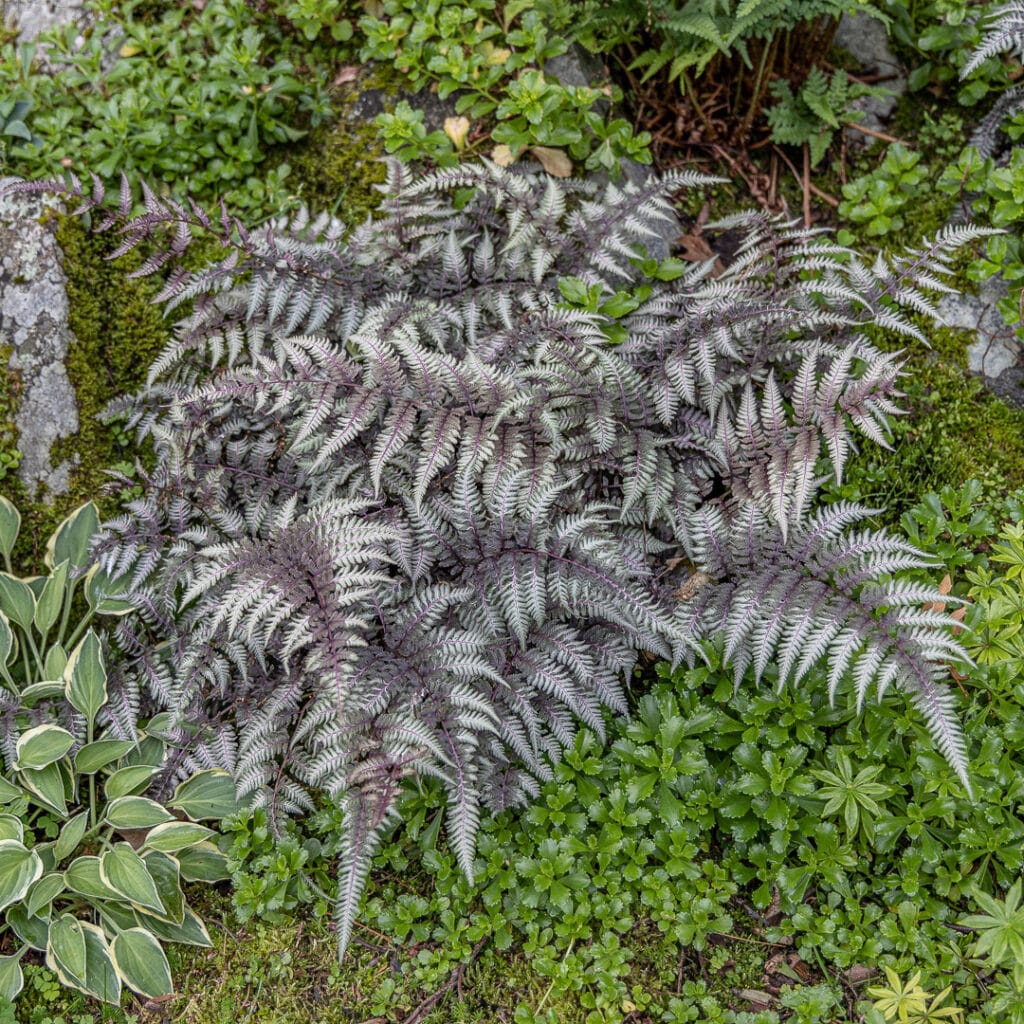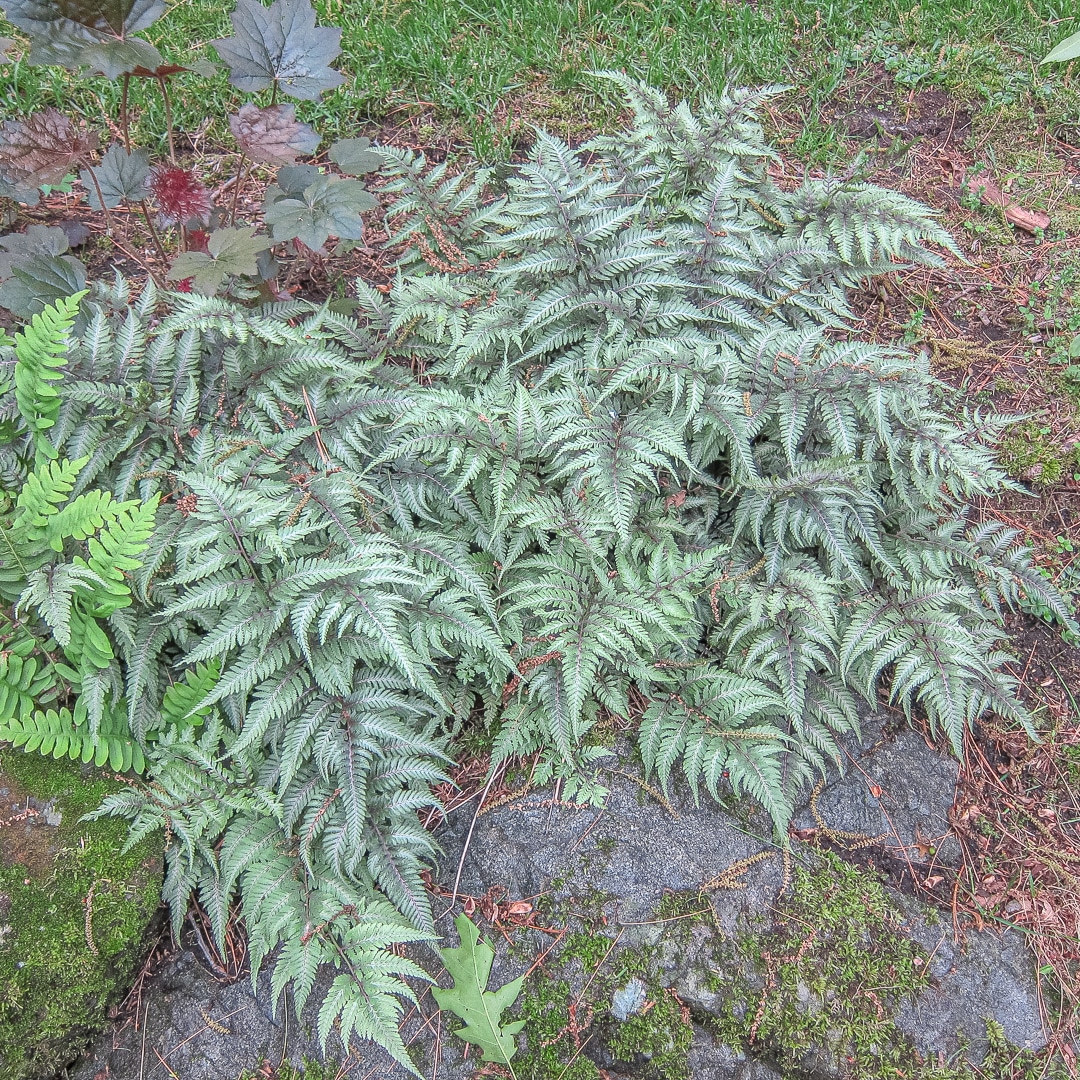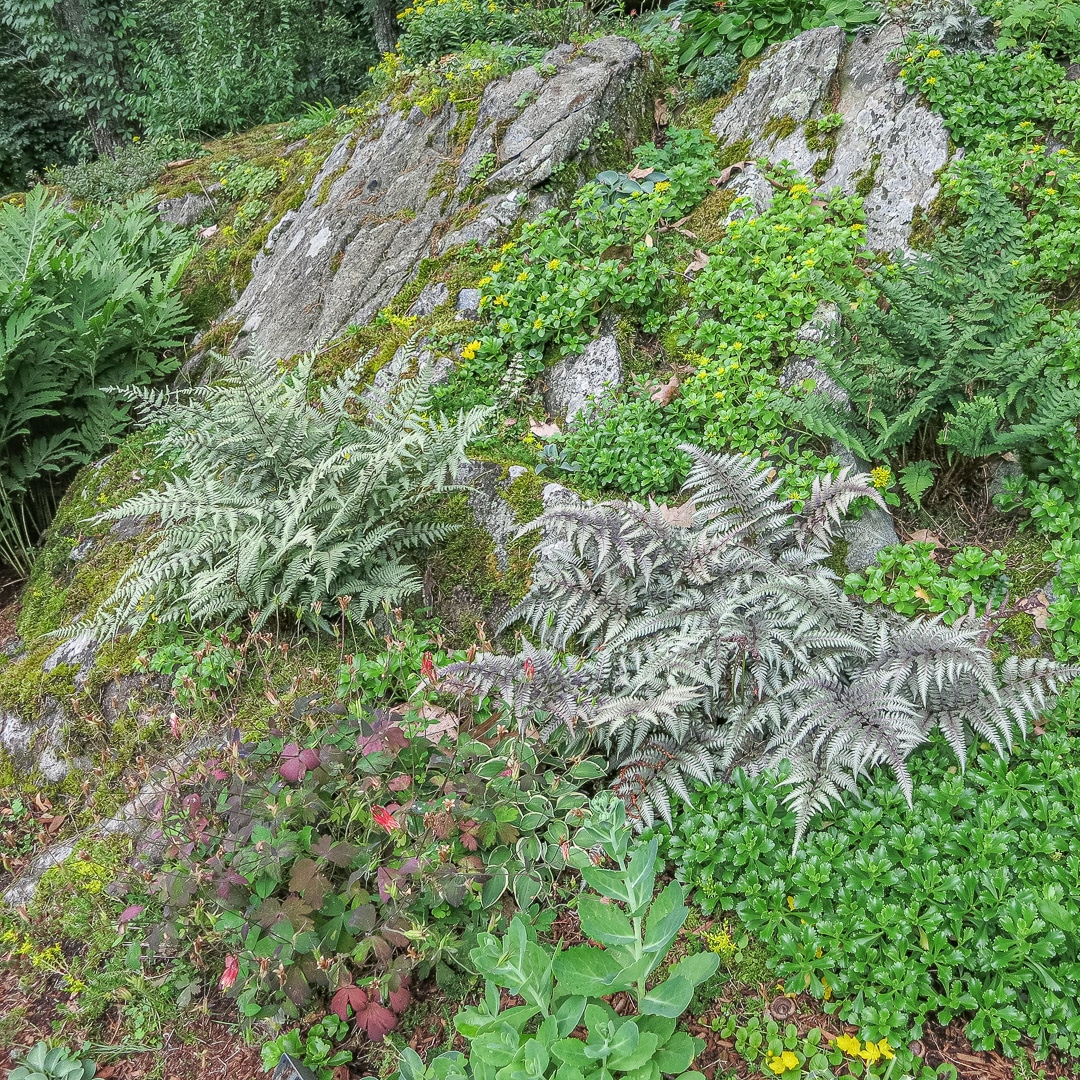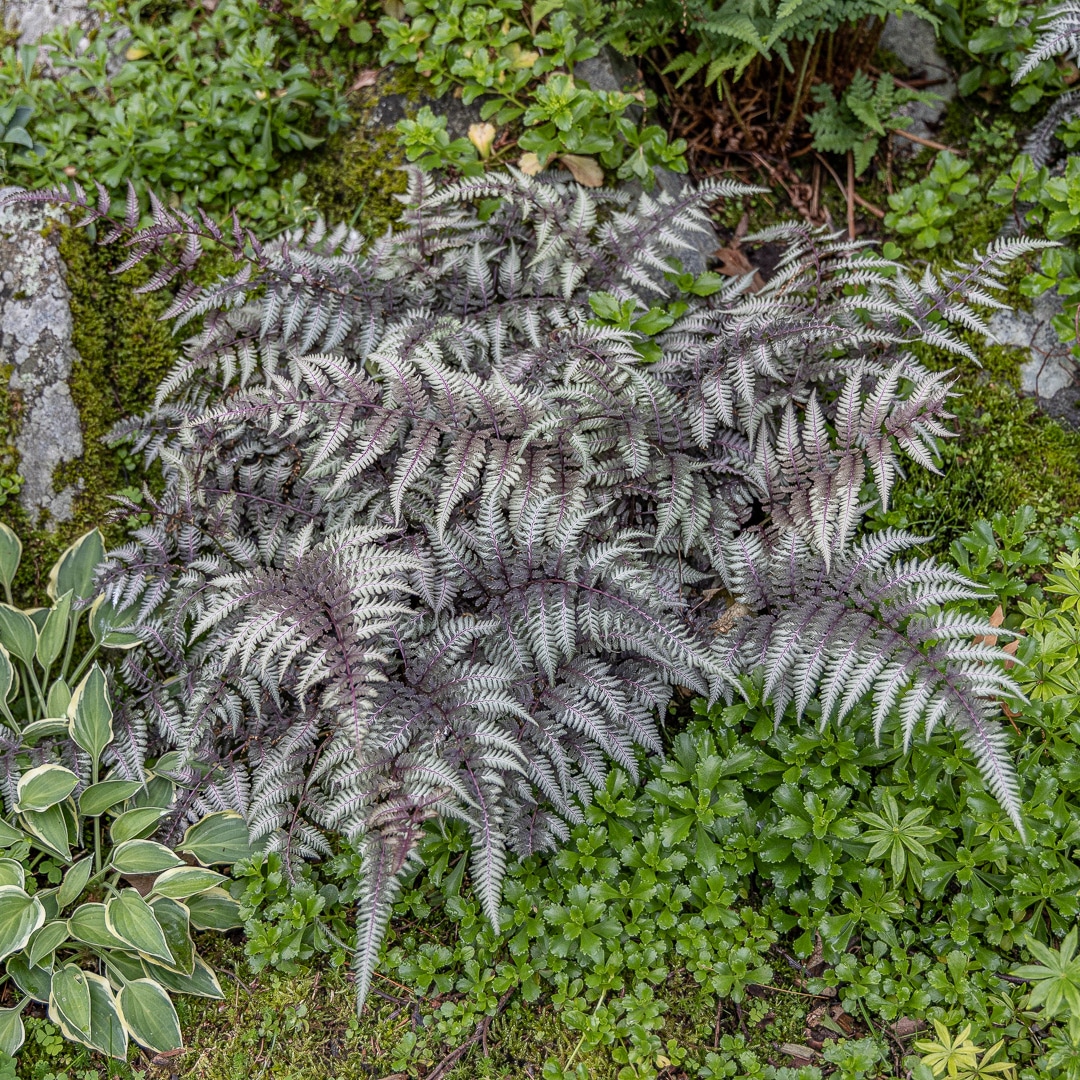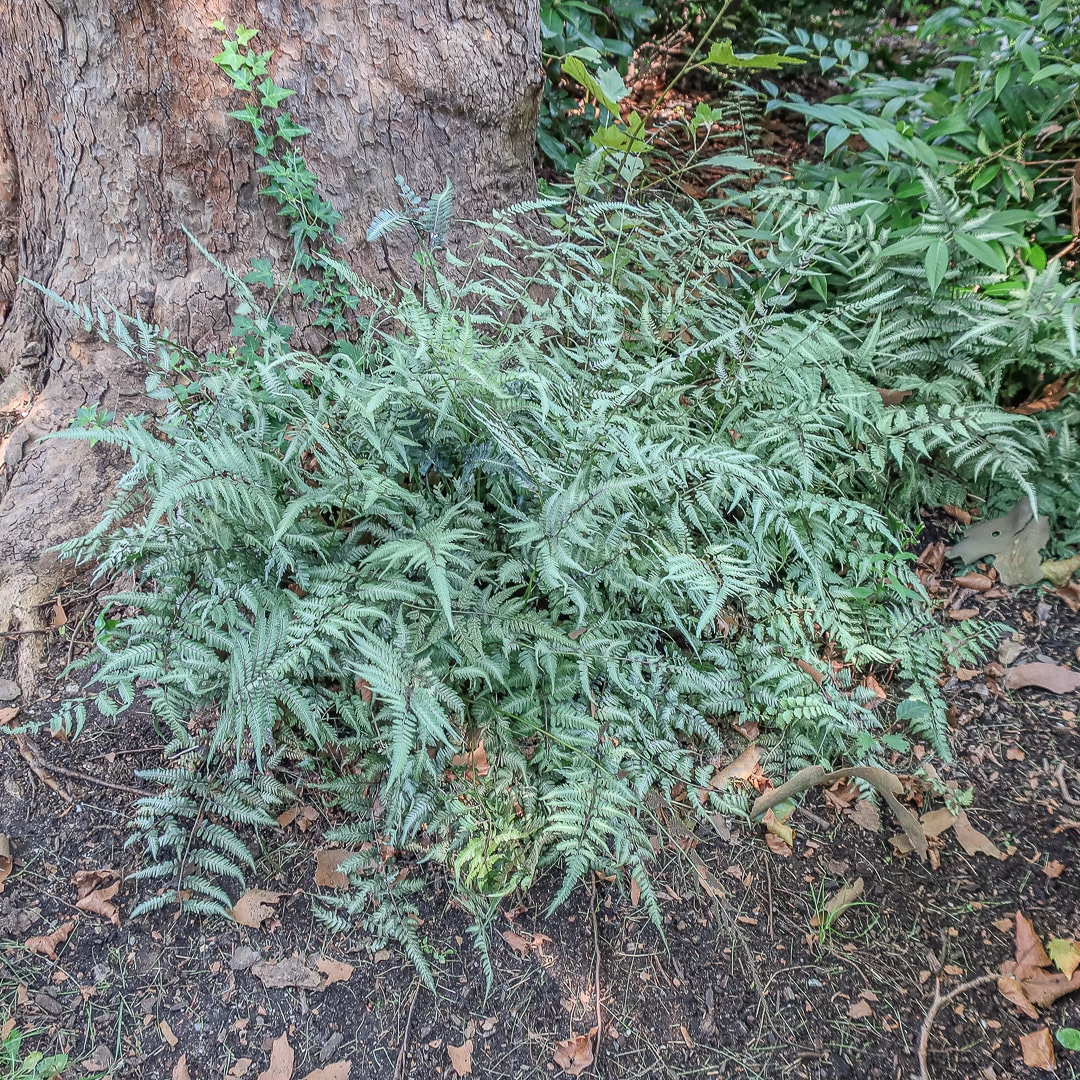Color is not just about flowers. We like to emphasize this point because springtime is often like starting a fireworks show with the grand finale. After spring has come and gone, many landscapes end up looking green for the rest of the season. There are many ways to keep the blooms going by selecting plants with later bloom times and by using annuals. Another great option is to look for plants that have unique foliage.
In this case, Japanese painted fern (Athyrium niponicum) is a perennial fern that can add some silvery, pastel-like season-long color and contrast to a landscape dominated by green. Native to Asia, Japanese painted ferns like moist, well-drained soils with lots of organic matter, grow 12 to 18 inches tall and wide, and do best in part shade (full shade in more southern zones). A great perennial for massing and grouping as well as a specimen planting in a rock garden. Japanese painted ferns are low to the ground, so using them along borders or in areas they can be seen from is important. They prefer moist soils, so places near streams and ponds will work as long as they aren’t prone to flooding or are muddy. They will grow in sunnier locations but need regular moisture. Once established, they can tolerate drier conditions for short periods. Japanese painted fern is deer resistant and also relatively pest-free.
If you are looking for some season-long color in a shade garden, this is a terrific plant to consider. There are many varieties available, with Athyrium niponicum ‘pictum’ being the gold standard. Many of the varieties have different blends and shades of silvers, reds and greens.
| Key Details | |
|---|---|
| Common Name: | Japanese Painted Fern |
| Botanical Name: | Athyrium niponicum |
| Plant Type: | Perennial |
| Plant Description: | Colorful fern with mixed shades of silver, red and green foliage. |
| Height: | 12" - 18" |
| Spread: | 12" - 18" |
| Foliage: | mixed shades of silver, red and green foliage depending on variety. |
| Flower: | N/A |
| Bloom Time: | N/A |
| Site Conditions | |
| Climate: | Zones 3-8 |
| Soil Type: | Loamy. Moist well-drained soils with lots of organic matter are best. |
| Soil pH: | 5.5-7.0 |
| Soil Nutrients: | Low |
| Sun: | Full shade to part sun. Shade to part shade best. |
| Specific Conditions: | Deer resistant. |
| Style | |
| Style Considerations: | Stunning multicolor foliage. Incredible contrast and fine texture for shady areas. |
| Maintenance | |
| Watering: | Watering weekly or biweekly if needed is typically best. Can handle some dry spell but moisture is important for long term success. |
| Mulching: | Not required but suggested to help retain moisture and suppress weeds. Also adds organic matter to the soil. |
| Fertilizing: | Not needed if you have healthy humus-rich soil with plenty of organic matter. |
| Weeding: | When in the right growing conditions and massed does a good job of stifling weeds. |
| Deadheading: | Cut off dead/browned foliage as it appears. |
| Staking: | Not needed |
| Dividing: | Yes, in early spring as they emerge or early fall |
| Transplanting: | Early spring when they start to appear or early fall is best but anytime works with sufficient watering. |
| Pruning: | See deadheading |
| Pests: | Rusts (fungal diseases) can appear on undersides of fronds (leaves) remove infected fronds as they appear. |
| Winterizing: | You can trim back dead leaves if desired in the late fall. |
